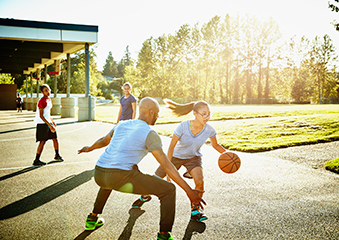BECAUSE KIDS WILL BE KIDS
The unique anatomy of a growing child or young adult requires highly specialized orthopaedic care when an injury occurs, or a congenital condition exists.
Call 800-662-4043 to make an appointment or schedule online.
The unique anatomy of a growing child or young adult requires highly specialized orthopaedic care when an injury occurs, or a congenital condition exists.
Call 800-662-4043 to make an appointment or schedule online.

Crystal Clinic’s pediatric orthopaedic doctors are uniquely qualified to diagnose and treat the very specific needs of children and teens.
Our pediatric physicians have the specialized training, knowledge and experience to treat issues unique to young, growing bodies. If your child, aged 5 through 18, is experiencing the effects of a congenital or developmental orthopaedic condition, or has been injured in sports competition or another activity, turn to Crystal Clinic.


Biologic therapy surgeries developed at Crystal Clinic have advanced care for young patients with anterior cruciate ligament (ACL) injuries and joint cartilage loss. The proprietary FlashFix™ technique combines arthroscopic repair or reconstruction with a patient’s own platelet-rich plasma in a collagen wrap to significantly improve healing and strength.
In another revolutionary procedure pioneered at Crystal Clinic, our physicians repair damaged cartilage using an individual’s own cartilage in a single surgery versus requiring two surgeries over time. Using the Reveille® Cartilage Processer, the patient’s own cartilage can now be used to create an immediate implantable repair. This technique yields outstanding results and helps active youth return to sports and other activities sooner.
In addition to sports-related injuries, our pediatric orthopedic specialists are well-versed in treating a wide range of other musculoskeletal issues facing children and adolescents, including these frequently seen conditions:
Talk with a board-certified orthopaedic physician who specializes in the unique physical needs of developing children and teens. Book an appointment now to discuss your child’s care options.